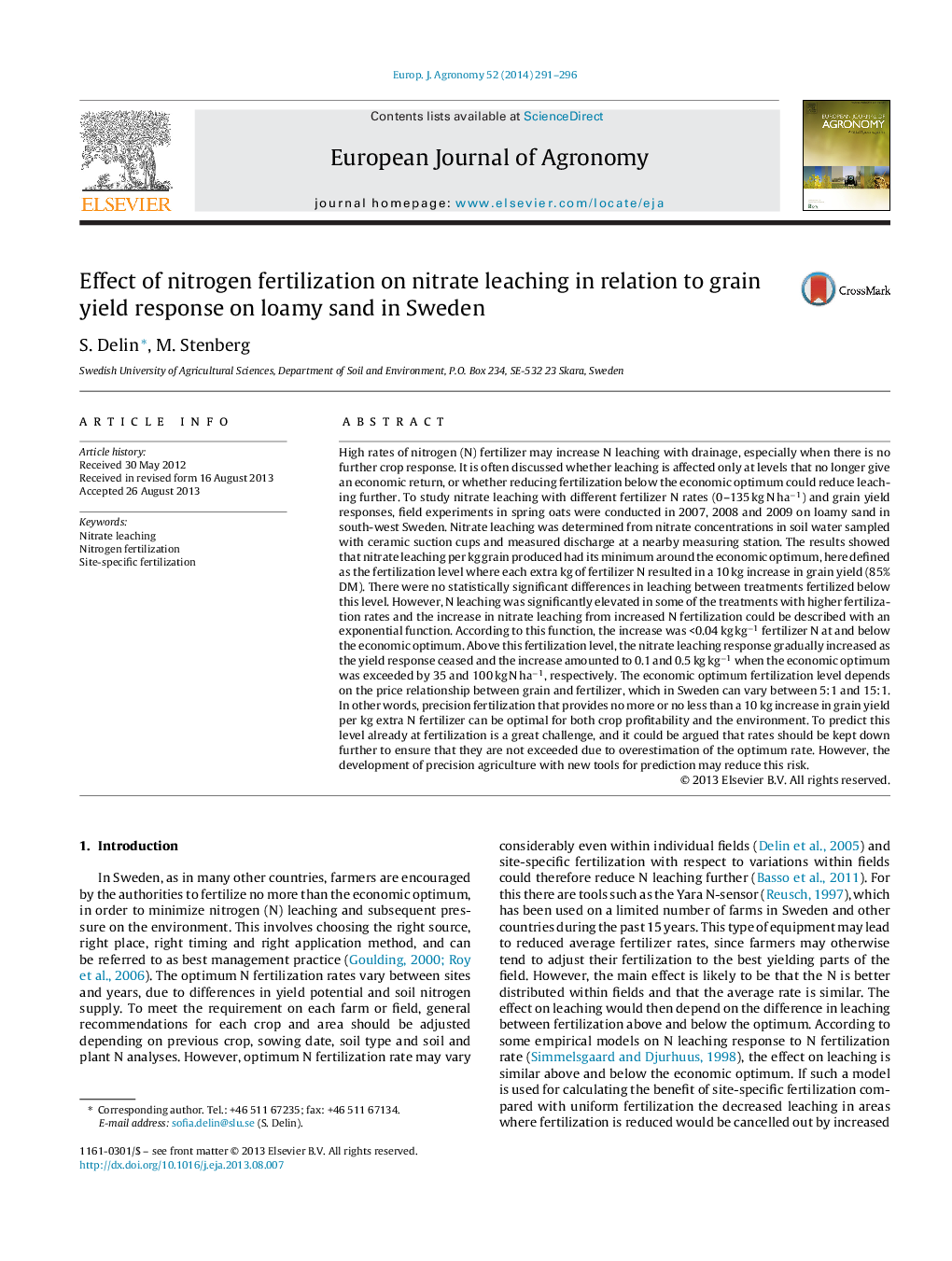| Article ID | Journal | Published Year | Pages | File Type |
|---|---|---|---|---|
| 4509032 | European Journal of Agronomy | 2014 | 6 Pages |
•Nitrate leaching per kg grain produced was at its minimum when yield responded with 10 kg grain per kg fertilizer N.•Nitrate leaching was insignificantly affected by fertilization below but exponentially above this level.•Site-specific fertilization with regard to within-field variability could reduce nitrate leaching.
High rates of nitrogen (N) fertilizer may increase N leaching with drainage, especially when there is no further crop response. It is often discussed whether leaching is affected only at levels that no longer give an economic return, or whether reducing fertilization below the economic optimum could reduce leaching further. To study nitrate leaching with different fertilizer N rates (0–135 kg N ha−1) and grain yield responses, field experiments in spring oats were conducted in 2007, 2008 and 2009 on loamy sand in south-west Sweden. Nitrate leaching was determined from nitrate concentrations in soil water sampled with ceramic suction cups and measured discharge at a nearby measuring station. The results showed that nitrate leaching per kg grain produced had its minimum around the economic optimum, here defined as the fertilization level where each extra kg of fertilizer N resulted in a 10 kg increase in grain yield (85% DM). There were no statistically significant differences in leaching between treatments fertilized below this level. However, N leaching was significantly elevated in some of the treatments with higher fertilization rates and the increase in nitrate leaching from increased N fertilization could be described with an exponential function. According to this function, the increase was <0.04 kg kg−1 fertilizer N at and below the economic optimum. Above this fertilization level, the nitrate leaching response gradually increased as the yield response ceased and the increase amounted to 0.1 and 0.5 kg kg−1 when the economic optimum was exceeded by 35 and 100 kg N ha−1, respectively. The economic optimum fertilization level depends on the price relationship between grain and fertilizer, which in Sweden can vary between 5:1 and 15:1. In other words, precision fertilization that provides no more or no less than a 10 kg increase in grain yield per kg extra N fertilizer can be optimal for both crop profitability and the environment. To predict this level already at fertilization is a great challenge, and it could be argued that rates should be kept down further to ensure that they are not exceeded due to overestimation of the optimum rate. However, the development of precision agriculture with new tools for prediction may reduce this risk.
